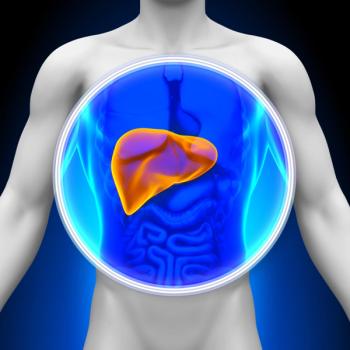
- ONCOLOGY Vol 14 No 3
- Volume 14
- Issue 3
Phase I/II Study of Thrice-Weekly Rituximab in ChronicLymphocytic Leukemia/Small Lymphocytic Lymphoma: A Feasible and Active Regimen
Rituximab (Rituxan) has significant activity in low-grade non-Hodgkin’s lymphoma (NHL), but lower responses were noted in small lymphocytic lymphoma (SLL), a nodal variant of chronic lymphocytic leukemia (CLL). Pharmacokinetic data
Rituximab (Rituxan) has significant activity in low-grade non-Hodgkins lymphoma (NHL), but lower responses were noted in small lymphocytic lymphoma (SLL), a nodal variant of chronic lymphocytic leukemia (CLL). Pharmacokinetic data showed that higher serum rituximab concentrations correlated with response to therapy and that SLL patients had low trough levels. These findings suggested that once-weekly dosing, as administered to NHL patients, was not an ideal schedule for CLL/SLL patients. Therefore, we initiated a phase I/II study of rituximab in CLL/SLL patients using a thrice-weekly schedule.
All CLL/SLL patients had CD20 expression (dim to bright, as determined by semiquantitative flow cytometry) and met the modified National Cancer Institute (NCI) CLL response criteria for treatment. Rituximab was administered on day 1 at a 100-mg dose over 4 hours to minimize infusion-related events (stepped-up dosing). Patients then received 250 mg/m² (cohort 1; N = 3 patients) or 375 mg/m² (cohort 2; N = 6 patients) on day 3 with the standard NHL administration schedule, and thrice-weekly thereafter at this fixed dose for 4 weeks (12 total treatments). Patients in cohort 3 (N = 18) were treated identically to those in cohort 2 except that rituximab was administered over 1 hour on the third and subsequent doses.
Response was assessed using the modified NCI criteria for CLL, which require maintenance of response for 2 months post-therapy. To date, 27 patients have been enrolled (21 CLL/6 SLL); median age of these patients was 64 years (range, 51 to 80 years). The median number of prior treatments was two (range, zero to six). Of the 27 patients, 22 had high modified-Rai risk and 5 had intermediate risk. All 27 patients were evaluable for toxicity and 18 were evaluable for response.
Serious adverse events occurred in two patients. The first patient died of a pulmonary hemorrhage that occurred 48 hours after the first dose of rituximab (possibly drug related), and the second patient developed septic arthritis (unlikely drug related). All other patients completed therapy, including 16 in cohort 3.
Infusion-related events occurred in 13 patients (8 grade 1 and 5 grade 2 events) during infusion 1, 7 patients during infusion 2 (4 grade 1 and 3 grade 2 events), and 2 patients during infusion 3 (both grade 1 chills). Six patients had pretreatment platelet counts between 20 and 50 ×109/L, three of whom developed grade 4 thrombocytopenia.
Of the 18 patients evaluable for response, 9 (50%) responded to therapy (8 partial responses [PRs], 1 complete response [CR]). Semiquantified expression of CD20 on tumor cells correlated with clinical response (for 16 analyzed patients) as follows:
Responses for CLL (6/13; 46%) and SLL (3/5; 60%) were similar and were more marked in blood, nodal, and splenic sites, as compared with bone marrow. Response has also been noted in 3/7 (43%) fludarabine-refractory patients.
CONCLUSION: Our data demonstrate that this schedule of rituximab is feasible and has significant clinical activity that may correlate with density of CD20 expression in patients with CLL/SLL.
Articles in this issue
almost 26 years ago
FHIT Gene, Smoking, and Cervical Canceralmost 26 years ago
IOM Medical Error Estimates Questioned, But Legislation Consideredalmost 26 years ago
Less Toxic Therapies for Hodgkin’s Disease May Reduce Secondary CancersNewsletter
Stay up to date on recent advances in the multidisciplinary approach to cancer.
































































































